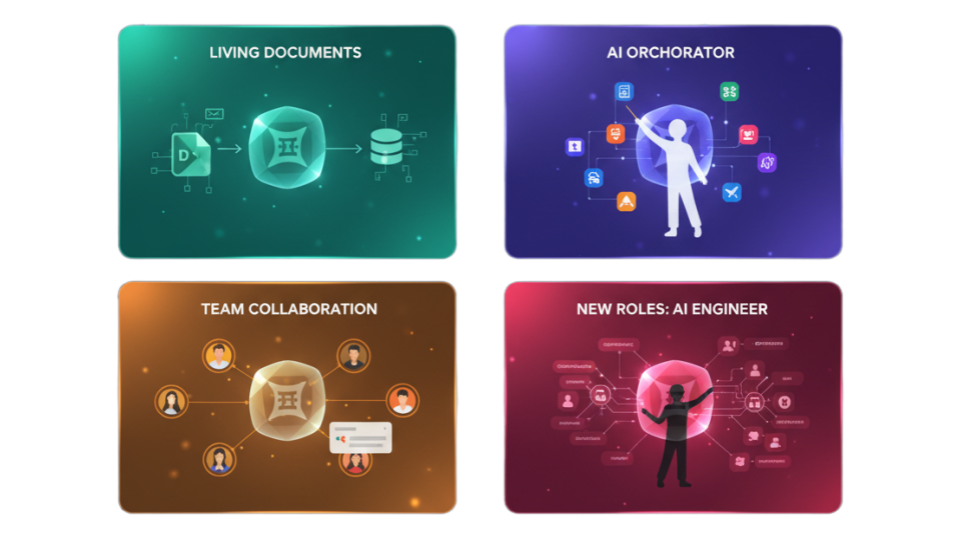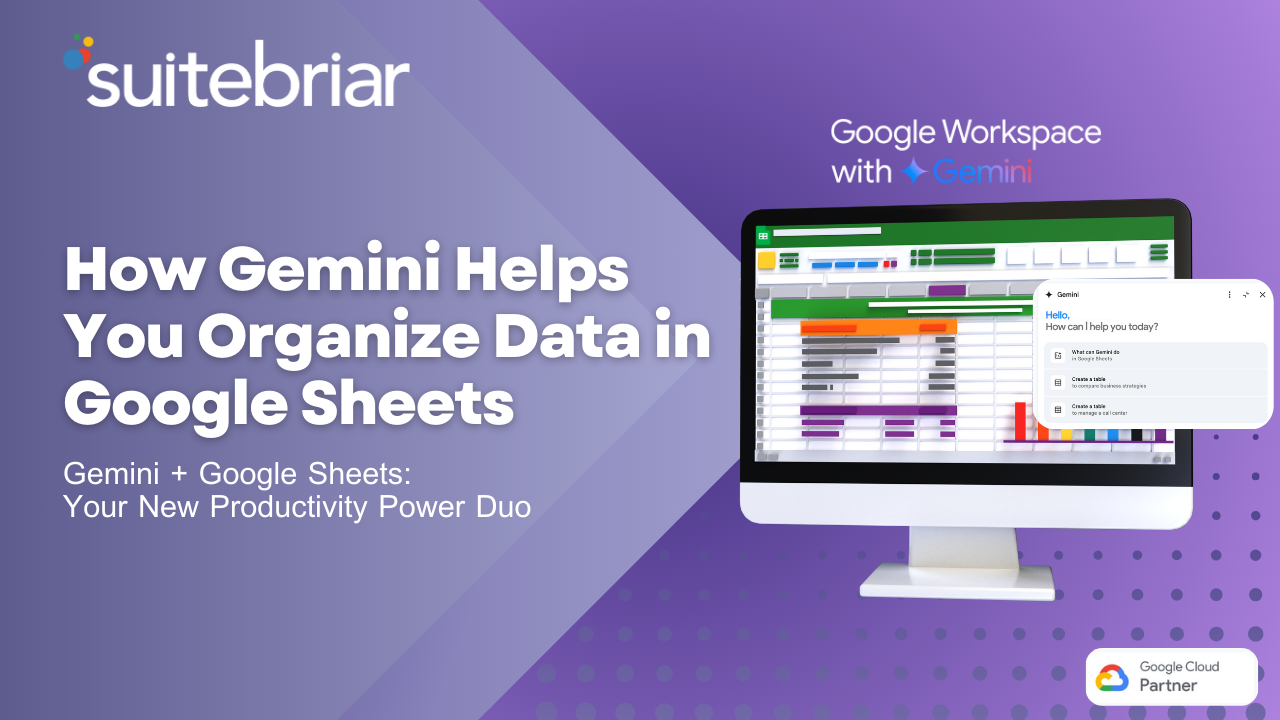4 Fantastic Takeaways from Google’s Gemini Gems
Beyond the Standard Chatbot
If you've spent any time working with AI, you've likely felt the frustration. You pour time into crafting the perfect prompt, only to repeat the process every time you start a new chat. Or worse, you build a custom AI assistant for your team, only to watch its knowledge become obsolete in a matter of days.
This is a problem that plagues the current generation of AI tools, a constant battle against outdated information and repetitive work. As one user aptly observed:
"You upload your company's playbook to ChatGPT today, and by next week, half of it is outdated. Your AI is giving answers based on last quarter's pricing while your team is already on version 3.0."
This cycle of manual updates creates a ceiling on what AI can truly achieve within a dynamic organization. But Google's Gemini Gems platform represents a fundamental shift beyond these simple, ephemeral chat sessions. It’s an architecture designed for persistence, collaboration, and real-time accuracy. This article will explore the four most impactful and fantastic takeaways from this new approach to AI.
Takeaway 1: Your AI Is Now a "Living Document" That Never Goes Out of Date
 The most significant architectural advantage of Gemini Gems is their ability to connect directly to Google Drive files, such as Docs and Sheets. This is not the static, one-time upload common to other platforms. Instead, it’s a dynamic, persistent link.
The most significant architectural advantage of Gemini Gems is their ability to connect directly to Google Drive files, such as Docs and Sheets. This is not the static, one-time upload common to other platforms. Instead, it’s a dynamic, persistent link.
When a user links a Gem to a Google Doc, the Gem doesn’t receive a snapshot of that file; it maintains a live connection to its most recent version. Any edits, updates, or additions made to the source document in Google Drive are automatically reflected in the Gem's knowledge base without requiring a manual re-upload.
This "living document" capability is a game-changer. It solves two critical problems that have limited the enterprise utility of custom AIs: "knowledge fragmentation" (where valuable information is scattered and lost) and AI assistants providing outdated information. By ensuring the AI always has access to the single source of truth, Gems become uniquely suited for dynamic, ongoing projects where information is constantly evolving.
Takeaway 2: You’re Not Just Prompting—You’re an AI Orchestrator
 The Gems platform fundamentally alters the user's role. The paradigm is shifting away from being a simple prompter for a single, generalist "conversational partner." Instead, the user becomes an "orchestrator of their own stable of AI assistants."
The Gems platform fundamentally alters the user's role. The paradigm is shifting away from being a simple prompter for a single, generalist "conversational partner." Instead, the user becomes an "orchestrator of their own stable of AI assistants."
This represents a move toward a personalized "AI toolkit," where each Gem is a distinct, precision-engineered tool designed for a specific job. To facilitate this, Google provides a guided structure built on four foundational pillars:
- Persona: Defines the AI’s role, tone, and interaction style (e.g., a "senior software architect").
- Task: Provides an explicit directive for the desired action or output (e.g., "analyze the provided Python script").
- Context: Gives the necessary background information and constraints (e.g., "the script is part of a high-traffic e-commerce backend").
- Format: Dictates the desired structure of the output (e.g., "use numbered lists within each section").
This framework effectively serves as a guided curriculum in prompt engineering, lowering the barrier to entry and empowering users to achieve expert-level results without needing to become prompt engineering specialists themselves.
Takeaway 3: Your Team’s Best Ideas Are Now a Shareable, Scalable Tool
 The ability to share Gems transforms them from personal productivity tools into powerful engines for collaboration. Recognizing that user adoption hinges on familiarity, Google designed the sharing mechanism to mirror the ubiquitous interface of Google Drive. Users can grant ‘Viewer’ or ‘Editor’ permissions to colleagues with the same ease as sharing a Google Doc, dramatically lowering the learning curve.
The ability to share Gems transforms them from personal productivity tools into powerful engines for collaboration. Recognizing that user adoption hinges on familiarity, Google designed the sharing mechanism to mirror the ubiquitous interface of Google Drive. Users can grant ‘Viewer’ or ‘Editor’ permissions to colleagues with the same ease as sharing a Google Doc, dramatically lowering the learning curve.
Consider the concrete example of a marketing lead who creates a "Brand Persona" Gem, trained on the company's official style guide and brand voice principles. By sharing this single, authoritative tool with the entire department, they can scale content creation dramatically. Every team member, from a junior copywriter to a social media manager, can now generate content that is perfectly aligned with the company's brand identity, ensuring consistency across all channels.
Shared Gems become living repositories of an organization's institutional knowledge and best practices. They effectively codify and distribute expertise, breaking down knowledge silos and ensuring that valuable organizational wisdom is accessible and usable by everyone.
Takeaway 4: Get Ready for the "AI Process Engineer"
 Perhaps the most surprising implication of this shareable AI ecosystem is the logical emergence of new, specialized roles within companies. As organizations begin to build and rely on a vast library of shared Gems, a dedicated function will be required to manage these digital assets.
Perhaps the most surprising implication of this shareable AI ecosystem is the logical emergence of new, specialized roles within companies. As organizations begin to build and rely on a vast library of shared Gems, a dedicated function will be required to manage these digital assets.
This gives rise to the potential role of a "Gem Librarian" or "AI Process Engineer." This individual or team would be responsible for identifying organizational best practices, building and optimizing "official" company-wide Gems, training employees on their effective use, and overseeing the governance and quality control of the entire shared Gem ecosystem.
This is the most critical takeaway: the technology is not merely a feature release, but an organizational catalyst. It signals a future where competitive advantage is defined by the strategic orchestration of digital AI talent.
Conclusion: A New Era of Collaborative Intelligence
Google's Gemini Gems mark a pivotal shift from isolated, one-off AI conversations to a structured, personalized, and collaborative ecosystem of specialized digital experts. The platform’s true power lies not just in personalization but in its ability to scale expertise through a familiar and dynamic framework.
This architecture is more than a clever product design; it’s a foundational step toward the future of more complex "agentic AI" systems, where teams of specialized AI agents can be orchestrated to solve multi-step problems. As we move into this new era, we are left with a powerful question to consider.
When our best expertise becomes a tool that anyone can use, how does that change the very nature of work?


.png?width=150&height=150&name=Blog%20Slide%20(1).png)
.png)
.png)
